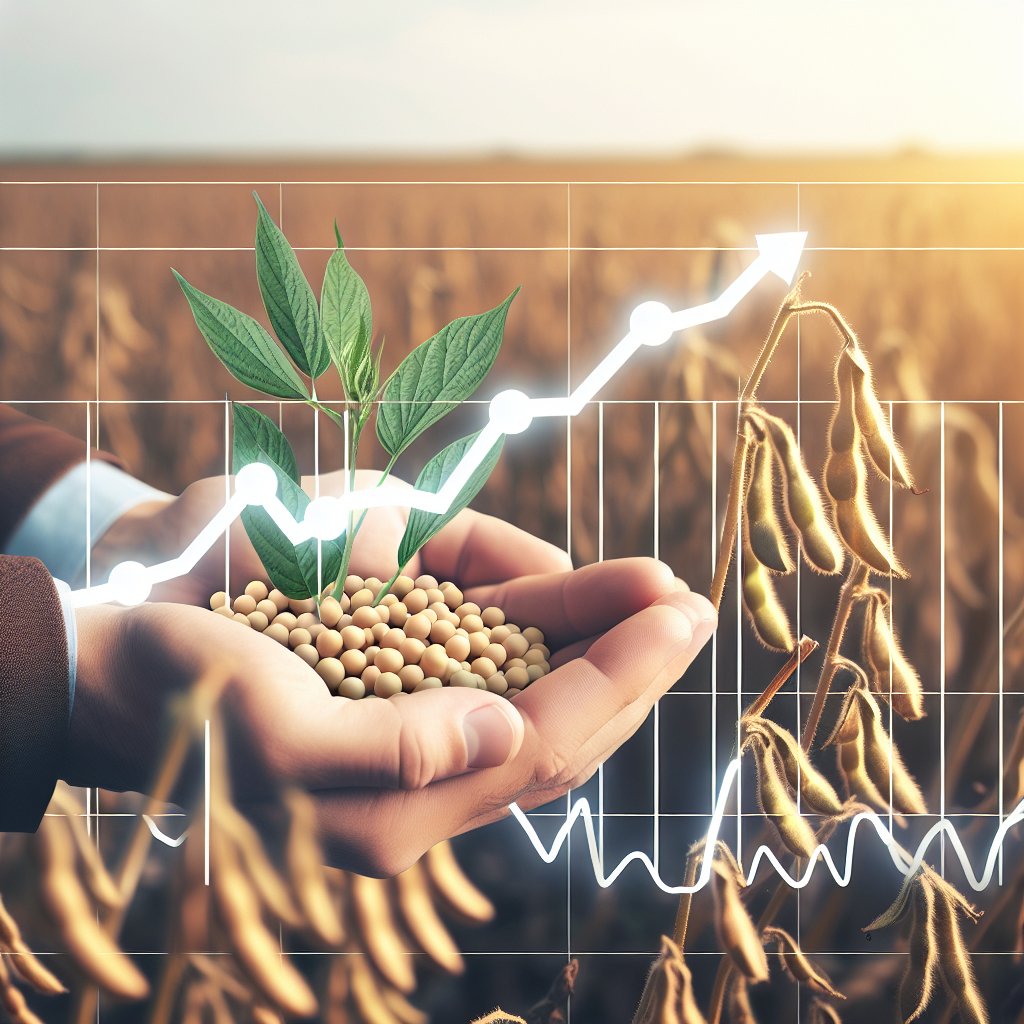The price of soybeans is increasingly influenced by the complex interplay of climate change and agricultural practices. As one of the most widely cultivated and traded crops globally, soybeans are not only a staple in animal feed but also play a crucial role in the production of various food products and biofuels. Understanding how climate change affects soybean prices is essential for farmers, investors, and policymakers alike. This article will explore the factors driving soybean prices in the context of climate change, examining both the challenges and opportunities that arise from this global phenomenon.
Climate Change and Its Impact on Soybean Production
Climate change is reshaping agricultural landscapes around the world, and soybean production is no exception. Rising temperatures, altered precipitation patterns, and increased frequency of extreme weather events are all contributing to shifts in how soybeans are grown and harvested. These changes can have significant implications for supply, demand, and ultimately, prices.
Temperature Variations
One of the most direct effects of climate change on soybean production is the increase in average temperatures. Soybeans thrive in specific temperature ranges, and deviations from these ranges can lead to reduced yields. For instance, excessive heat during the flowering stage can cause flowers to drop, leading to lower pod formation and, consequently, reduced harvests. Studies have shown that for every degree Celsius increase in temperature, soybean yields can decrease by approximately 10%. This decline in yield can create a ripple effect in the market, driving prices higher as supply diminishes.
Precipitation Changes
Changes in precipitation patterns also play a critical role in soybean production. Regions that traditionally receive consistent rainfall may experience droughts or excessive rainfall, both of which can adversely affect crop yields. Drought conditions can lead to water stress, stunting growth and reducing the overall quality of the beans. Conversely, excessive rainfall can lead to flooding, which can damage crops and create favorable conditions for diseases. These unpredictable weather patterns can lead to fluctuations in soybean supply, causing prices to rise as farmers struggle to meet demand.
Extreme Weather Events
The increasing frequency of extreme weather events, such as hurricanes, tornadoes, and severe storms, poses another significant threat to soybean production. These events can devastate entire crops, leading to immediate supply shortages. For example, the 2020 hurricane season in the United States caused extensive damage to soybean fields in the Gulf Coast region, resulting in a spike in prices as markets reacted to the anticipated decrease in supply. As climate change continues to exacerbate the severity and frequency of these events, the agricultural sector must adapt to mitigate risks and ensure stability in soybean production.
Market Dynamics and Price Fluctuations
The relationship between climate change and soybean prices is not solely determined by production factors; market dynamics also play a crucial role. Global demand for soybeans is influenced by various factors, including population growth, dietary changes, and the increasing use of soy in biofuels. As the world population continues to grow, so does the demand for protein-rich foods, leading to increased consumption of soy products.
Global Demand Trends
As countries like China and India experience rising incomes, their populations are shifting towards more protein-rich diets, which often include soy products. This growing demand can place additional pressure on soybean prices, especially in the face of climate-related supply challenges. For instance, China is the largest importer of soybeans, and any disruptions in supply due to climate change can lead to significant price increases on the global market. The interplay between supply constraints caused by climate change and rising global demand creates a volatile pricing environment for soybeans.
Speculation and Market Sentiment
Market speculation also plays a significant role in soybean price fluctuations. Traders and investors closely monitor weather patterns, crop reports, and other indicators to make informed decisions about buying and selling soybeans. When adverse weather conditions are predicted, or when reports indicate lower-than-expected yields, market sentiment can shift rapidly, leading to price spikes. This speculative behavior can amplify the effects of climate change on soybean prices, creating a feedback loop that further destabilizes the market.
Technological Innovations and Adaptation Strategies
In response to the challenges posed by climate change, the agricultural sector is increasingly turning to technological innovations and adaptation strategies. Advances in biotechnology, such as genetically modified organisms (GMOs), have led to the development of soybean varieties that are more resilient to heat, drought, and pests. These innovations can help mitigate some of the negative impacts of climate change on soybean production, potentially stabilizing prices in the long run.
Additionally, sustainable farming practices, such as crop rotation, cover cropping, and precision agriculture, can enhance soil health and improve water management. By adopting these practices, farmers can increase their resilience to climate-related challenges, ultimately contributing to a more stable supply of soybeans and reducing price volatility.
Conclusion
The price of soybeans is intricately linked to the effects of climate change on agricultural production. As temperatures rise, precipitation patterns shift, and extreme weather events become more frequent, the challenges facing soybean farmers are likely to intensify. However, the growing global demand for soybeans, coupled with market dynamics and speculation, adds further complexity to the pricing landscape.
To navigate this evolving environment, stakeholders in the agricultural sector must prioritize innovation and adaptation. By investing in research, embracing sustainable practices, and leveraging technology, farmers can enhance their resilience to climate change and contribute to a more stable soybean market. Ultimately, understanding the multifaceted relationship between climate change and soybean prices is essential for ensuring food security and economic stability in the face of a changing climate.




